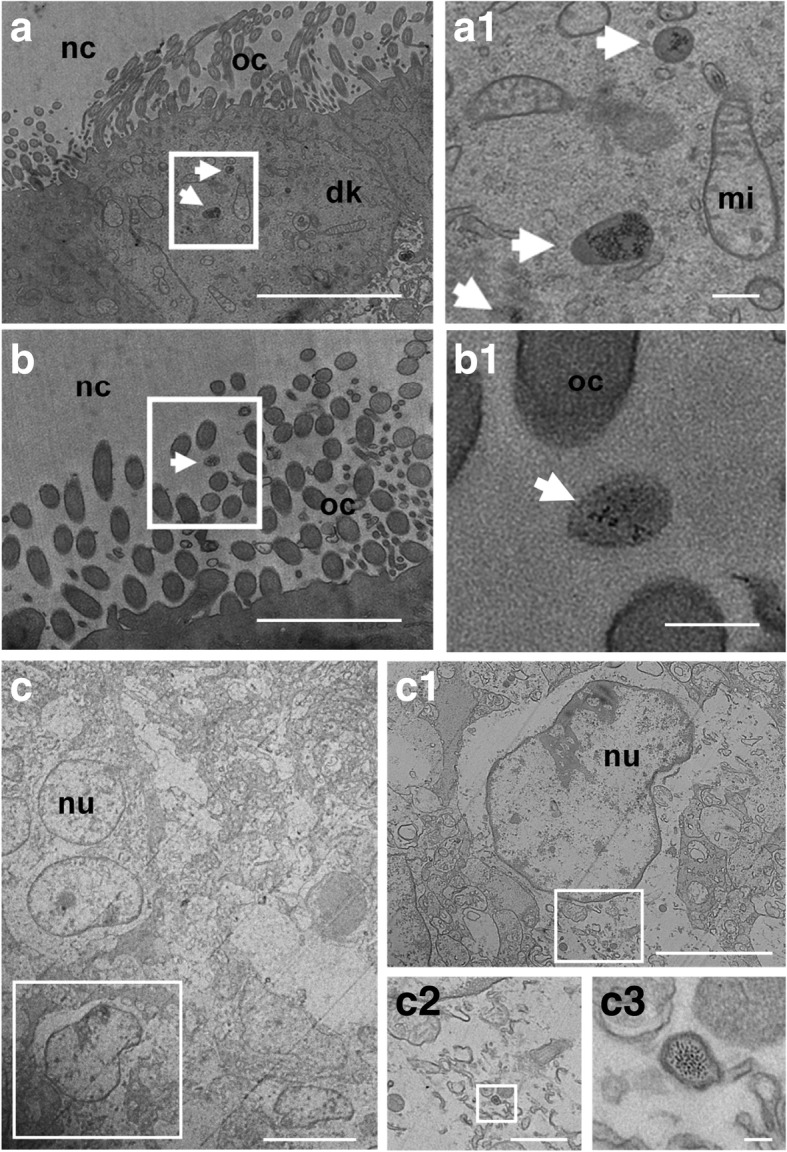Fig. 3.

Electron micrograph showing the presence of particle-like structures in exposed GD28 fetuses’ olfactory tissues. a and b. Electron micrograph of the apical zone of the olfactory epithelium from exposed GD28 fetuses. a. Olfactory sensory neurons cilia with the structure in the framework enlarged at higher magnification (a1). The white arrows point out isolated particle-like structures (15–20 nm in diameter), which appeared inside olfactory cilia or in contact with olfactory cilia. b. Olfactory sensory neurons cytoplasm, with the structure in the white framework at higher magnification (b1). The white arrows point out lysosome-like vesicles containing NP-like particles (15–20 nm in diameter). Scale bars: a and b = 5 μm; a1 and b1 = 200 nm. c. Electron micrograph of the olfactory glomerulus from an exposed fetus showing the presence of NP-like particles in the cytoplasm of a PG cell. c1, c2 and c3 are enlargements at higher magnification to point out lysosome-like vesicles containing NP-like particles (5 nm in diameter). Scale bars: c. = 10 μm; c1 = 5 μm; c2 = 1 μm; c3 = 50 nm. nc = nasal cavity; dk = dendritic knok; oc = olfactory cilia; nu = nucleus, mi = mitochondrion
